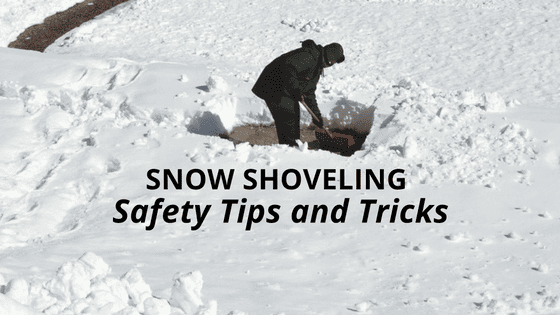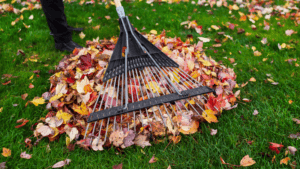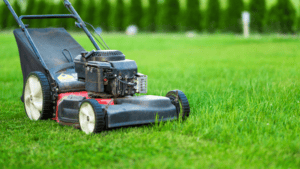As winter enters the area some may look forward to the beauty of snow covered trees and yards; while others feel dread at the first site of snow because of the extra time, work and effort that a few inches of the powdery stuff involves when it hits the area.
Our suggestion is to try to stay positive and walk on the sunny side of the street. Think of the snow as an opportunity to turn a typically sedentary time of the year into an active time. For example, just 15 minutes of snow shoveling is considered moderate physical activity and since we know we should aim for 30 minutes of moderate physical activity most days of the week shoveling is a good workout. A person who weighs 170 pounds and shovels for 30 minutes burns about 250 calories.
Here are some other tips and tricks to getting through the snow shoveling season on a positive and safe note:
- Check with your doctor. Those who are inactive or have a history of heart trouble, your doctor should sign off on you before you begin shoveling snow. Studies show an increased number of fatal heart attacks after heavy snowfalls. This may be caused by the sudden demand that shoveling puts on a heart. After two minutes of shoveling, the heart rate of a sedentary man rose to higher levels than recommended during aerobic exercise. So be safe and consult your doctor to make sure you’re healthy enough to shovel snow.
- Avoid caffeine and nicotine before beginning. These stimulants can raise your heart rate and constrict blood vessels which put extra stress on your heart.
- Hydrate. Even in cold weather dehydration can become a serious issue.
- Dress appropriately. If you are not dressed correctly for the weather conditions, you can become hypothermic. This is the time to wear a hat, gloves, winter jacket, heavy socks and boots.
- Warm up first. As with any other exercise, tight, cold muscles are more likely to strain or sprain than warm, relaxed muscles.
- Choose the right snow shovel for you. Here are some shovel features to consider:
- Curved handle – allows you to keep your back more straight when shoveling.
- Length – the handle is right for you when you can slightly bend your knees, flex your back 10 degrees or less and hold the shovel comfortable in your hands at the beginning of the “shoveling stroke”.
- Blade – sometimes a smaller blade is better than a larger one, even though a small blade can’t shovel as much at one time you avoid the risk of trying to lift too heavy a pile of snow that can come with using a larger blade.
- Push the snow, do not lift it because pushing puts far less strain on your spine than lifting does.
- Grip. When gripping the shovel make sure your hands are at least 12 inches apart. Creating a distance between your hands increases your leverage and reduces the strain on your body.
- Technique. Squat with your legs apart, lift with your legs. Do not bend at the waist. Scoop small amounts of snow at a time and walk to where you need to where you need to move it. Do deep snow a little at a time by taking an inch or two off the top.
- Move your feet instead of twisting. This can save your back!
- Do not ever throw snow over your shoulder.
- Keep in mind that wet snow can be very heavy, a full shovel load can weigh up to 25lbs.
- Take frequent breaks to stretch your back arms and legs as you go and pace yourself.
- If you experience pain of any kind while shoveling, stop immediately and seek help.
Snow shoveling can be great exercise when it is done correctly, bearing safety in mind. By following the snow shoveling tips and tricks you are less likely to be injured while clearing your path. Also, don’t forget your neighbors who might not be able to remove snow from their pathways. Helping for just a few minutes will make their day and keep them safe too!



